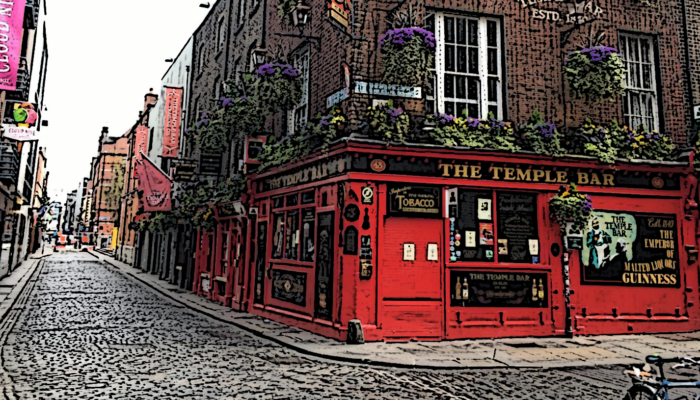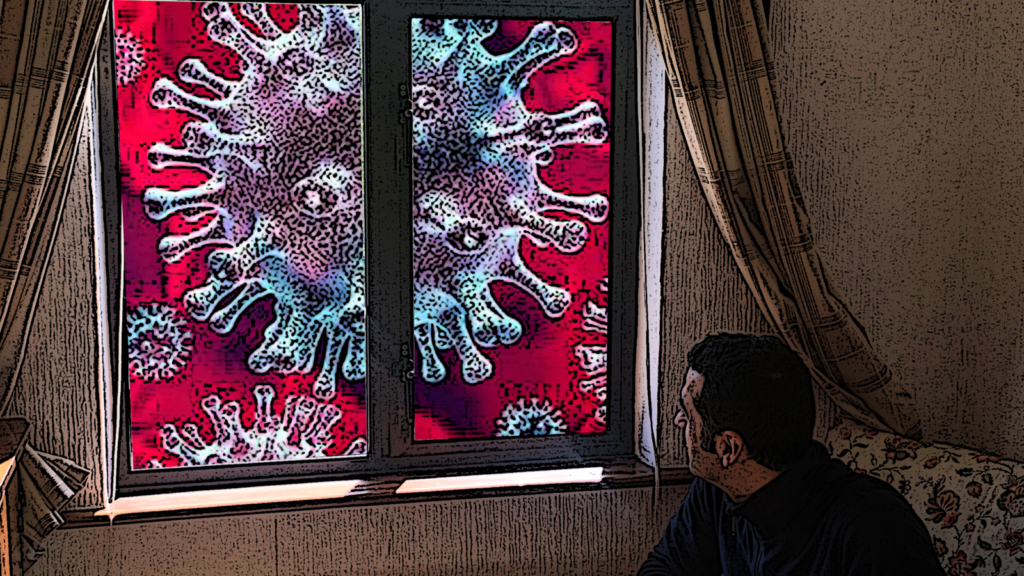
I imagine that in a couple of months European countries will give the green light: the restrictions and social-distancing will be relaxed and people will step out of their houses. Blinking into the bright summer sunlight in the Northern Hemisphere, they will lift a hand towards the sun to shield their sensitive eyes unaccustomed, after weeks and months of lockdown, to the natural light.
People will breathe in the fresh air, fresh in a manner that one did not experience for years in their streets. Of course, the decline of traffic has cleared the air in a way that environmentalists had only dreamed of over the last two decades. A celebration all over the globe follows as people celebrate their “freedom, health and life”. The euphoria continues for weeks to come, accompanied by the inevitable “I survived COVID-19!” tacky t-shirts and promises of a better future.
What happened so far?
Three days into 2020, the year started with the threat of WWIII (remember that? Franz Ferdinand and #WWIII), and three months into 2020 we are fighting a pandemic. What a year so far, and in the middle of this crisis the WHO is in danger of losing a huge funding source [1]. Murphys Law, right?
Due to COVID-19, most countries have a strict social-distancing policy in place with police making sure citizens comply with these measures. In some ways, the global social-distancing has had positive effects on the environment. Less traffic on the streets and in the air for three months! When I leave the house I could swear the air feels lighter. Satellite images over Wuhan and other parts of the world have shown the air pollution has declined [2]. Venice has seen the return of fish in the channels, while the Liffey in Dublin revealed guns and ancient shopping trollies.
Another more relevant topic to this blog is also how quiet the earth has become [3]. Anthropogenic noise declines when people stay at home more. As a result, we could wonder how the seismic signals are changing in cities and if seismograms will be more noise-free in the weeks and months to come.
Despite the initial positive environmental benefits, the death toll caused by the COVID-19 contagion keeps going up. Partly because in many countries the extend of the situation has not been taken seriously. As a matter of fact, a reluctant part of the population has declined to stick to the policies [e.g., 4].
“Stay Home. Stay Safe.”
“It’s not about you!”
“Social distancing!”
We all know the new slogans by now, but not everybody understands the necessity to comply with these rules (e.g., [5]). When I talk to my colleagues and friends about the current situation, everybody sticks to the rules, stays home and tries to keep working. Everybody is afraid to some degree, even if we try to hide it. The impact it already has on our society is indisputable. Discussions are emerging with topics: “How could our working habits change in the future?”, “Why do we need a crisis to finally find time to talk more to our friends on the other side of the world?”, “What will new technologies and innovations arise from this pandemic?”
We are drifting to a scenario like in Asimovs’ “The naked sun”, where humans are taught to avoid personal contact under any circumstance [6] and robots are our only companions.
Is this a likely future?
I don’t think so.
I rather feel a soupçon of a dystopia when reading and listening to the news lately, for example when teenagers cough at a nurse [7] or police takes extreme measures to enforce lockdown policies [8]. When going for needed groceries, I encountered daredevil teenagers kicking a coke can in the middle of the street not caring about cars and pedestrians, laughing and ignoring the world around them, even a young man driving daringly on its back-wheel on the red light. It seems some people have taken this pandemic as a chance to become petty criminals, even if it’s only the traffic laws, at this moment. How far can it go?
Flashes of Clockwork Orange coming up, mixed with a 1984 feeling when reading about the companies using webcams to check on their employees [9].
In Europe, it has taken a few weeks to see the first impacts of the social-distancing kicking in, but it’s coming. People seem to accept the increasingly strict measures with the hope that if they act now, the sooner everything will be over and we will be able to go back to “normal” (what really is normal, after what we are experiencing…?).
Lessons learned (?)
By the time late autumn comes, people are back to “normality”. The clear waters in Venice would be clouded again by massive tourist groups; in China, the pollution levels would be even higher than before COVID-19; and people would be traveling in a full subway to work despite having a cold.
Humans have this talent to quickly forget and ignore lessons learned from the past. There is no back to normality after this global event. There was no back to normality after WWII. Let’s not forget what we learned in the post-COVID-19. Let’s not make the same mistakes.
We were not prepared for this situation, despite warnings from scientists years before the pandemic hit — “Not a question of if, but when.”, e.g. Bill Gates in his TED talk. The same goes for climate change. Remember again, Australia was (literally) on fire at the beginning of the year. Now Europe is experiencing an attack of Xylella fastidiosa [10], cherry, almond, plum and olives trees are in danger of dying rapidly (remember the movie Interstellar?) and fishes are dying out in other parts of the world [11].
Procrastination is something a lot of people are familiar with (see TED talk by Tim Urban) and humans cannot afford to procrastinate, ignore, and not care any longer. The next pandemic might strike again in a couple of years. Drowning cities, continent-spanning fires and massive famines are already here. Like with COVID-19 the only thing we can do is to flatten the curve as soon as possible.
This blog post was written by Maria Tsekhmistrenko
with revisions from Michaela Wenner and Marina Corradini
-> Go back to the blog series
_______________________________________________________________
References:
[1] https://www.bbc.com/news/world-us-canada-52291654
[2] https://www.bbc.co.uk/news/world-asia-51691967
[3] https://edition.cnn.com/2020/04/02/world/coronavirus-earth-seismic-noise-scn-trnd/index.html?utm_medium=social&utm_term=link&utm_source=twCNN&utm_content=2020-04-03T07%3A52%3A02
[4] https://www.bbc.com/news/uk-england-coventry-warwickshire-52025918
[5] https://www.bbc.com/news/world-51982495
[6] https://en.wikipedia.org/wiki/The_Naked_Sun
[7] https://www.independent.ie/world-news/coronavirus/they-could-kill-someone-gang-of-youths-cough-on-nurse-39074300.html
[8] https://www.bbc.co.uk/news/uk-52101040
[9] https://www.businessinsider.com/work-from-home-sneek-webcam-picture-5-minutes-monitor-video-2020-3?r=US&IR=T
[10] https://www.bbc.com/news/science-environment-52234561
[11] https://www.bbc.com/news/world-asia-52227735


